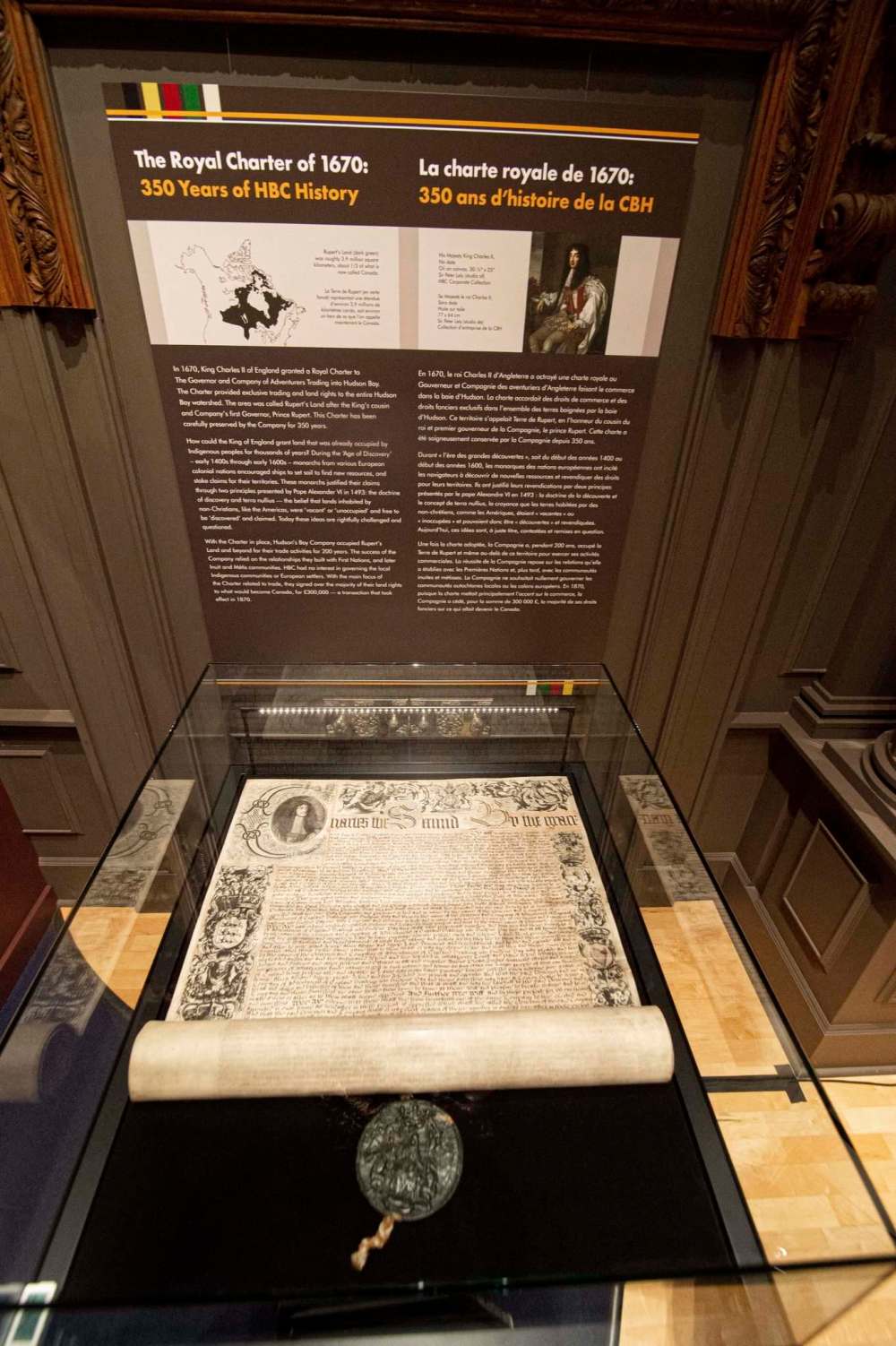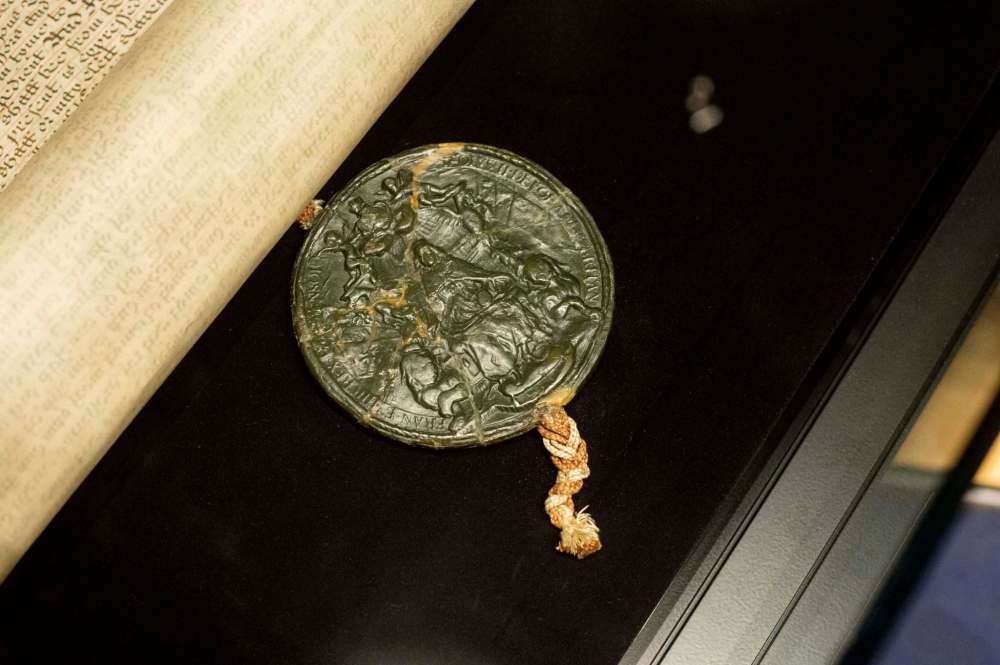HBC royal charter exhibit offers up-close look at key piece of Canada’s colonial history
Advertisement
Read this article for free:
or
Already have an account? Log in here »
To continue reading, please subscribe:
Monthly Digital Subscription
$0 for the first 4 weeks*
- Enjoy unlimited reading on winnipegfreepress.com
- Read the E-Edition, our digital replica newspaper
- Access News Break, our award-winning app
- Play interactive puzzles
*No charge for 4 weeks then price increases to the regular rate of $19.00 plus GST every four weeks. Offer available to new and qualified returning subscribers only. Cancel any time.
Monthly Digital Subscription
$4.75/week*
- Enjoy unlimited reading on winnipegfreepress.com
- Read the E-Edition, our digital replica newspaper
- Access News Break, our award-winning app
- Play interactive puzzles
*Billed as $19 plus GST every four weeks. Cancel any time.
To continue reading, please subscribe:
Add Free Press access to your Brandon Sun subscription for only an additional
$1 for the first 4 weeks*
*Your next subscription payment will increase by $1.00 and you will be charged $16.99 plus GST for four weeks. After four weeks, your payment will increase to $23.99 plus GST every four weeks.
Read unlimited articles for free today:
or
Already have an account? Log in here »
Hey there, time traveller!
This article was published 10/09/2020 (1905 days ago), so information in it may no longer be current.
A piece of Canada’s history will be on display in Winnipeg starting this fall—the Hudson’s Bay Company plans to make the royal charter available for public viewing at the Manitoba Museum from Saturday until early 2021.
“It’s an incredible document, and if you come down to see it the preservation is remarkable,” said Amelia Fay, curator for the HBC Museum Collection. “It really is a foundational document for what we now call Canada.”
The charter, a 350-year-old relic of Canada’s colonial history, is a “pivotal historical document” signed by King Charles II in 1670, launching the Hudson’s Bay Company into existence, HBC said in a Thursday news release.

Originally granted to the “Governor and Company of Adventurers Trading into Hudson Bay,” the charter established the original structure for the company’s governance and provided exclusive rights to the Hudson Bay watershed — unceded land already home to several Indigenous peoples.
The area was named Rupert’s Land after the King’s cousin and the company’s first governor, Prince Rupert, and comprises more than 40 per cent of modern-day Canada.
The exhibition will join the Hudson’s Bay Company Museum Collection at the Manitoba Museum, and will provide visitors with a chance to engage in complex conversations around the artifact and the nation’s history, said Fay, adding she hopes the document will ideally provide opportunities for visitors to think about the legacy of land claims in the context of Canada’s relationship to Indigenous populations.
“This document reflects that thinking from that time period, in that age of discovery,” Fay said.
“I hope people start to think a little bit more about land rights and land claims, particularly settlers.”

Fay said she hopes the age of the document will point visitors to the realization that settler claims to land considered “vacant,” simply because it was not inhabited by Christians, long-precedes Canada’s Confederation.
The document, shipped to Winnipeg from Toronto, will also provide “some depth” to the fur-trading history that stems out of the province, she said.
The Hudson’s Bay Company spearheaded the display of the document, citing an opportunity to consider and acknowledge its own role in shaping Canada’s relationship with Indigenous people.
“As we acknowledge our past and the role HBC played, specifically in the history of Indigenous Peoples, we are committed to encouraging discussion and learning, in part through access to artifacts and information such as the Royal Charter,” wrote HBC governor and executive chairman Richard Baker in the release.
“While we look back on the past 350 years, this acknowledgement and education is vital to ensuring we create an inclusive and just path forward.”

The charter will be available for viewing in the HBC Gallery with admission to the Manitoba Museum, Thursdays to Sundays between 11 a.m. and 5 p.m.
julia-simone.rutgers@freepress.mb.ca
Twitter: @jsrutgers


Julia-Simone Rutgers is the Manitoba environment reporter for the Free Press and The Narwhal. She joined the Free Press in 2020, after completing a journalism degree at the University of King’s College in Halifax, and took on the environment beat in 2022. Read more about Julia-Simone.
Julia-Simone’s role is part of a partnership with The Narwhal, funded by the Winnipeg Foundation. Every piece of reporting Julia-Simone produces is reviewed by an editing team before it is posted online or published in print — part of the Free Press‘s tradition, since 1872, of producing reliable independent journalism. Read more about Free Press’s history and mandate, and learn how our newsroom operates.
Our newsroom depends on a growing audience of readers to power our journalism. If you are not a paid reader, please consider becoming a subscriber.
Our newsroom depends on its audience of readers to power our journalism. Thank you for your support.

